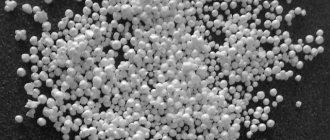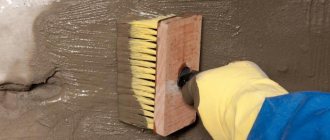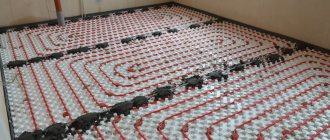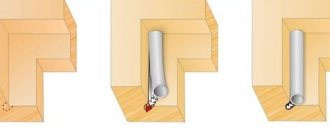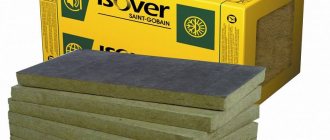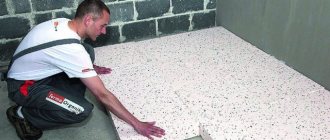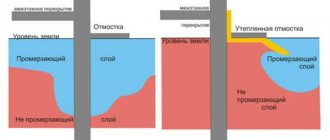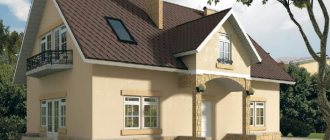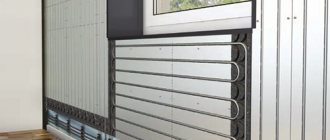Filling interwall voids with polyurethane foam
has been providing its professional services for filling voids, cavities and walls for a long time.
In our work we use high-quality polyurethane foam, which has fairly high heat-saving characteristics. We pour polyurethane foam into the cavities in the walls, between frame elements, and into the voids between slabs. This technology allows to reduce heat loss, reduce noise levels in buildings, and also protect load-bearing walls. We have been working in this field for more than 10 years, so we know exactly how to do the job at the proper level. The company employs highly qualified specialists who are ready to take on a project of any complexity. We work with both individuals and legal entities. Everyone receives an individual approach and high level of service.
Features of lightweight brickwork
The walls of brick low-rise buildings are erected 2-2.5 bricks thick. This amounts to 510-640 mm. The parameters are calculated based on the ability of the masonry to conduct and retain heat, as well as calculations of autumn and winter temperatures typical for the area. This type of masonry is called lightweight or well.
The well masonry consists of 2 parallel walls that are connected to each other. Between them is a layer of air that performs thermal insulation functions. The thickness of the outer wall is half a brick, the inner one is 1-1.5. The air layer between them is about 120 mm. This type of masonry is more effective than solid masonry: brick consumption is 40% less, and the wall mass is 28% less. The thermal resistance of the structure increases.
IMPORTANT: well masonry is used exclusively for the construction of external walls of low-rise buildings, or the top floors of apartment buildings, since its strength is low for high-rise buildings.
Interwall filling of polyurethane foam
Polyurethane foam poured between walls is a good opportunity to insulate a house, apartment or commercial building. Pouring polyurethane foam allows you to reduce the cost of ongoing construction work and at the same time comply with all the standards for heat conservation.
If the building was built a long time ago, but thermal insulation is required, then pouring polyurethane foam into the voids will help solve the problem.
We pour polyurethane foam into interwall voids using special equipment. This is the only way to tightly fill the cavity inside the wall with high-quality lightweight insulation.
Polyurethane foam
What is the difference between penoizol and polyurethane foam, which is a distant relative of penoizol?
Polyurethane foam is a polymer material, a type of plastic, which was also discovered in Germany in 1947 by a German chemist named Bayer. This insulation is obtained through the reaction of two and sometimes more components. Polyurethane foams are divided into rigid, elastic and integral. However, for us in this case, it is rigid polyurethane foam that is of interest, which has become widespread as a reliable construction insulation for buildings and private homes. Rigid PU foam, like penoizols, has a fine cellular structure, but has a higher density - from 25 kg/m3 and higher, as well as increased elasticity, which makes it more durable, for example, it does not crumble or crumble.
Comparison of polyurethane foam and penoizol
Impact on human and animal health
Penoizol, according to manufacturers, has passed numerous safety tests and is completely neutral in its effects on the body for both humans and animals, as evidenced by numerous certificates. However, in some states of America and Canada, legislation prohibits the use of CPF as a potentially hazardous material. There is a similar ban in a number of European countries. The fact is that during the polymerization of urea foam, formaldehyde is released, which is harmful to the health of both people and animals. It must be said that the debate between scientists and manufacturers regarding the safety of urea-formaldehyde foam plastics still does not subside and therefore there is no definitive answer to the question of the safety of CPF. The only thing that can be said is that the possible risks of formaldehyde vapor release can be reduced by using a vapor barrier layer on the inside of the wall.
If we talk about polyurethane foam, then in matters of safety it has certificates and conclusions that prove its harmless effect on living organisms, as well as on the environment. In terms of the use of polyurethane foam, no other country in the world has such prohibitions as penoizol has.
Fire safety
If we talk about fire safety, penoizols belong to the flammability class G2, that is, they are not capable of spontaneous combustion. Polyurethane foams belong to the flammability class G3 and G4, which means that in the area of open fire they are low-flammability and self-extinguishing.
Water permeability
The percentage of moisture absorption in penoizols is quite high, approximately 18-20%, from which we can conclude that such heat insulators are afraid of moisture. With excess humidity, penoizol begins to deteriorate, so it requires additional steam and moisture insulation.
Polyurethane foams have minimal water permeability due to their closed-cell structure, so thermal insulation made from polyurethane foam will not only perfectly retain heat, but will also provide good anti-corrosion protection, protection from moisture, mold and fungi. It is also worth noting that condensation does not form on polyurethane foam surfaces.
Thermal insulation of foam insulation and polyurethane foam
High-quality penoizol has good thermal conductivity - up to 0.030 W/m•K, but the thermal conductivity of polyurethane foam is about 0.021 W/m•K.
Strength of polyurethane foam and penoizol
In terms of strength, penoizol is inferior to polyurethane foam, since it is a much more fragile material. But polyurethane foam is quite durable and at the same time elastic material, which is perfectly capable of withstanding, for example, shrinkage of the building, walking and other mechanical impacts.
Prices for penoizol and polyurethane foam
If we compare penoizol with polyurethane foam in terms of cost, then the first place will be taken by carbamide foam, which is an order of magnitude cheaper than polyurethane foam technology, however, its physicochemical qualities are lower than those of polyurethane foam...
How does the work happen?
Filling of polyurethane foam is carried out through the lower holes into which the material is supplied under pressure. As the voids fill and the foam hardens, the craftsmen move to the next level. The work continues until the specialists reach the ceiling openings.
Filling with polyurethane foam, in turn, provides a high level of protection against heat loss and cold ingress. Polyurethane foam is able to fill the smallest cracks, making the insulation absolutely airtight.
In addition, we provide waterproofing services for buildings.
12
Years of operation of the company
In the field of insulation and waterproofing
1920
Objects of varying sizes and complexity
190000 m2
Insulated and waterproofed area
4
Professional teams
99%
Satisfied clients
Rigid polyurethane foam
Using special installations, polyurethane foam (PPU) is applied to any surface and foamed on it.
The adhesion force of polyurethane foam exceeds the adhesive ability of all modern adhesives.
When sprayed, polyurethane foam fills all microcracks in liquid form under pressure, and then foams and increases in volume. A single coating without joints is formed. Provides a thermos effect that is unattainable when using other materials.
Density - 35-50 kg/cub.m.
Thermal conductivity coefficient - 0.03 W/m*
Moisture absorption coefficient - 2-3%
Effective service life is from 35 to 50 years.
There is no air gap between the sprayed polyurethane foam and the surface, which means there is no place for condensation to occur here and never will be.
Polyurethane foam with a closed cell structure consists of CLOSED microcapsules filled with a mixture of inert gas and air. The gas-air mixture in capsules is always motionless.
The process of penetration of cold air into the insulation is not through, but diffusion, due to the slow and gradual cooling of the molecules of the air mixture in the PU foam cells. Therefore, it is possible to apply a smaller layer of polyurethane foam compared to sheet and roll insulation.
The service life of polyurethane foam compared to the above insulation materials is disproportionately longer and is at least 25 years. If polyurethane foam does not come into direct contact with the environment, then the service life increases to 50 years or more. This is reliable and verified information.
For example, pouring polyurethane foam into the ventilation gap of brickwork. A very effective and durable way to insulate walls.
In addition, rigid polyurethane foam does not rot, does not absorb water, mice do not gnaw it and, contrary to rumors, it is absolutely harmless.
Polyurethane foam does not need to be fixed, it does not need a vapor barrier.
True, there is one BUT. Sprayed polyurethane foam must have closed cells and, accordingly, have a density of at least 35 kg/cub.m. If the density is lower, then it is polyurethane foam with open cells, reminiscent of a sponge or foam rubber. The thermal conductivity of such “light” polyurethane foam is higher, and the service life is much lower due to increased hygroscopicity and instability of the structure.
For example, at polar stations in the Arctic and Antarctic, polyurethane foam with a density of 45-60 kg/cub.m. is used as insulation; space stations are insulated with the same rigid polyurethane foam, because Only this material is capable of working under conditions of extreme temperature changes.
The only negative is the relatively high price, but polyurethane foam is applied once and almost forever.
Why PPU?
- The insulation is monolithic, no seams or joints
- Biologically neutral
- PPU is a self-extinguishing material
- Lightweight insulation that makes the structure heavier
- Additional sound insulation
- No cold bridges
- Indifferent to mice, rodents, fungus
Order pouring polyurethane foam into interwall voids from our company. We have extensive experience in filling cavities and voids on objects of varying complexity and volume.
Call today. We have a personal offer for each client!
Stages of filling voids and applying to the wall
Drill holes for penoizol evenly over the entire area. This type of insulation is used to insulate and fill three-layer walls, as well as slabs and other reinforced concrete structures that have many layers and voids.
With such insulation, foaming (filling) of the voids between the main and facing walls, made of reinforced concrete slabs or bricks, occurs.
It is necessary to prepare the wall, that is, remove wood, brick, concrete from it, and clean it from dust. The great advantage of the material is that you do not need to level the wall to use it.
It is necessary to drill or drill holes in the facing layer; they should have a diameter of 2.5-3 cm, located at an equal distance over the entire area. Penoizol is blown into the holes under pressure of up to 5 atmospheres.
Thermal insulation evenly fills the space between the walls. It has weak adhesion (adhesion) to concrete and brick, so it fills voids evenly.
High-pressure insulation with penoizol This method is used to fill voids larger than 5 cm with penoizol; the walls must be made of durable materials that can withstand high pressure.
Afterwards, the layer of penoizol must be leveled, cutting off the excess. Or remove excess with a dry cloth.
Low-pressure insulation of walls with foam insulation In order to insulate the walls from the outside, a wooden frame is made or it is constructed from metal, a fine-grained reinforcing mesh is stretched over it. Thermal insulating material is sprayed under it, then plaster is applied.
There is also low-pressure open insulation with penoizol.
In this case, the thermal insulation is poured slowly and gradually into the niche so that the uniformity of filling can be checked.
Watch the video, which shows in detail the stages of foaming walls with foam insulation:
How to fill the space between two walls?
there is a wall and a wall, there is a gap between them from 0 to 7 cm
the outer part of the wall is aligned at 0 (well, almost) and covered with wallpaper
but the sound insulation is worse, I want to fill the space between the two walls without disturbing the wallpaper too much, I called many people so far the options are:
ponoizol (I don’t understand, but the density is too low, not very good for sound insulation), but the technology is simple and you drill and unscrew 2.2 cm 8 pieces on the wall, then you can glue it with something), it shrinks up to 5%
polyurethane foam (I like the density) but there are a lot of holes, and they say the hose may rupture, i.e. technology is very dirty
- ecowool (average density, closer to penoizol) but the downside is too dirty and the holes are large
Dear, can you tell me who will take on the appropriate technology based on experience?
You will first determine the goal: is soundproofing important? Or not really. Make a decision based on the answer.
There will always be someone better.
L66 wrote: there is a wall and a wall, between them the gap is from 0 to 7 cm
Apartment enclosure wall? or between apartments? Load-bearing or partition type? wall material, thickness, what it stands on, on a slab or is it a continuation of the wall on the floor below.
wall between apartments. the neighbors are really nervous + shepherd)))
There will always be someone better.
I doubt that it is possible to significantly improve the insulation with a layer thickness of 0 cm. The walls between which the gap is made of what material? Their thickness?
plaster is their wall - and a tongue-and-groove block from my side was attached to their wall by SCHUMANET BM, but that’s not the point.
you just need to remove the drum effect from the base block (I don’t recommend it to anyone in the future)
but I’m more and more inclined to throw these blocks away, it’s complete nonsense, in our country where they give you a certificate for 5 rubles for anything, it turns out to be complete nonsense and lies
I decided not to use all these Foams that I wrote about above (I went to the studio and took measurements - they are of no use at all, and penoizol will also shrink)
L66 wrote: but I’m increasingly inclined to throw these blocks away
and lay out 1/2 brick.
We held a consultation here on the spot
There are no options to remove the walls, since this is tantamount to redoing two rooms in a freshly completed apartment, this is stupid.
because there will be a lot of dust and dirt. and in general there are no options yet
foam is nonsense, it would be scary to try,
I don’t understand one thing: why I don’t call anyone, everyone says nonsense, well, that is. invent some characteristics
resembles a 12-cylinder engine with an average fuel consumption of 9 liters per 100 km. ))
Related article: The walls in the house are sweating, what to do?
didn't anyone have any experience?
It turns out that there is only one option left: to add new ones to these walls and not destroy them
There’s no need for the brick, it’s also not soundproof at all, i.e. in SNIP back in the 70s, its sound insulation is described as significantly worse than that of a sandwich (50 mm fiberglass + gvl on the frame)
So what are the walls made of then? I don’t want to fence thick walls either
When building the wall, it was necessary to fill it with Light Butts or Acoustic Butts mineral wool - which is basically the same thing, but more expensive. Other options are not options. Cotton wool that is less dense, as well as more dense, is better not to use.
Vladimir, this is valuable advice, if you had spent a little time looking at what Shumanet BM is, you probably wouldn’t have written
I give you a hint, look for it on acoustic ru
it’s no worse than rockwool, but more expensive)))
but rockwool also works, you are right here. just an extra wall (
here it is important to put the wall on a perimeter gasket such that the density of the wall would be that brick is a good option, but again you need to do a lot of things to it so that you can’t hear it, and again you can’t hear it, it’s all bullshit
It’s better to isolate the sound at the source, it comes from their neighbors and then it will be quieter for everyone than the sound that they’ve already tried to remove completely
those. All these measures are good for the sound from you; the sound will come from the ceiling, the floor, and all the other walls. but if everyone takes such measures, then there will be no sound at all, it’s like a room in a room, but you understand, in Moscow, for example, people barely scraped together enough for an apartment and they simply don’t have another 30% to invest like that, but they have it for a home theater That's how we live (
